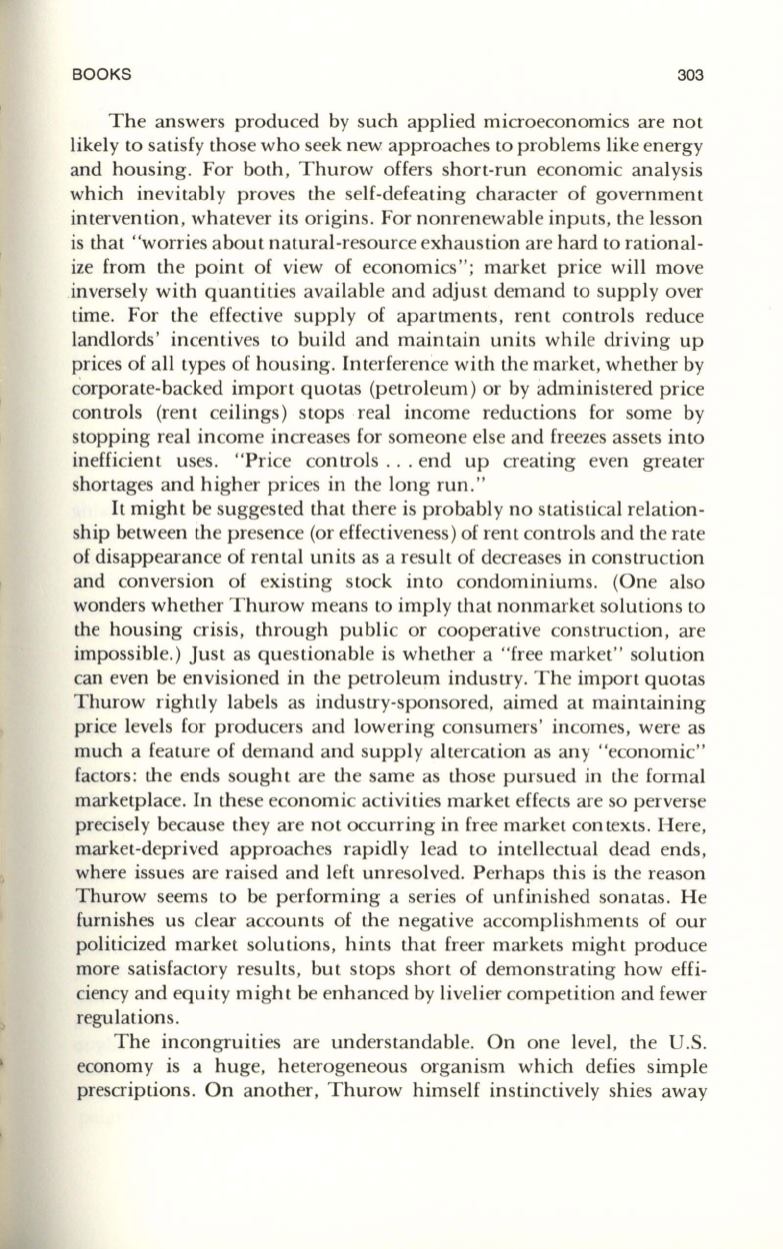
BOOKS
303
The answers produced by such applied microeconomics are not
likely
to
satisfy those who seek new approaches
to
problems like energy
and housing. For both, Thurow offers short-run economic analysis
which inevitably proves the self-defeating character of government
intervention, whatever its origins. For nonrenewable inputs, the lesson
is that "worries about natural-resource exhaustion are hard
to
rational–
ize from the point of view of economics"; market price will move
inversely with quantities available and adjust demand
to
supply over
time. For the effective supply of apartments, rent controls reduce
landlords' incentives to build and maintain units while driving up
prices of all types of housing. Interference with the market, whether by
corporate-backed import quotas (petroleum) or by administered price
controls (rent ceilings) stops real income reductions for some by
stopping real income increases for someone else and freezes assets into
inefficient uses. " Price controls ... end up creating even greater
shortages and higher prices in the long run ."
It
might be suggested that there is probably no statistical relation–
ship between the presence (or effectiveness) of rent controls and the rate
of disappearance of rental units as a result of decreases in construction
and conversion of existing stock into condominiums. (One also
wonders whether Thurow means
to
imply that nonmarket solutions to
the housing crisis, through public or cooperative construction, are
impossible.) Just as questionable is whether a "free market" solution
can even be envisioned in the petroleum industry. The import quotas
Thurow rightly labels as industry-sponsored, aimed at maintaining
price levels for producers and lowering consumers' incomes, were as
much a feature of demand and supply altercation as any "economic"
factors: the ends sought are the same as those pursued in the formal
marketplace. In these economic activities market effects are so perverse
precisely because they are not occurring in free market contexts. Here,
market-deprived approaches rapidly lead to intellectual dead ends,
where issues are raised and left unresolved. Perhaps this is the reason
Thurow seems
to
be performing a series of unfinished sonatas . He
furnishes us clear accounts of the negative accomplishments of our
politicized market solutions, hints that freer markets might produce
more satisfactory results, but stops short of demonstrating how effi–
ciency and equity might be enhanced by livelier competition and fewer
regulations .
The incongruities are understandable. On one level, the U.S.
economy is a huge, h eterogeneous organism which defies simple
prescriptions. On another, Thurow himself instinctively shies away


